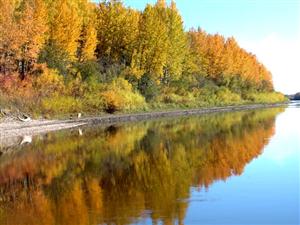Potential Effects of Aggregate Mining on Aquatic Ecosystems
Aggregate operations located next to or near rivers, lakes, or other waterbodies have the potential to significantly affect these environments. Potential effects on aquatic ecosystems include:
- Changes to hydrological patterns. The removal of the overburden (vegetation and soils) and changes to the landscape that result from the creation of pits and quarries can lead to changes in water drainage patterns. Also, the water storage capacity of underground aggregate deposits is lost when they are excavated (Winfield and Taylor 2005). Streamflow patterns—including the timing and amount of river discharge—and lake levels can be affected by these changes to surface water and groundwater.
- Increases in suspended sediment. Land exposed by aggregate operations can be prone to erosion, leading to the accumulation of silt in nearby waterbodies. In addition, slumping or sliding of unconsolidated material near waterbodies can introduce large quantities of sediment and rocks into the aquatic environment. Erosion control, such as leaving buffer zones of vegetation, can reduce these problems, and is a critical component of the project planning stage.
- Pollution. Large quantities of water are used in sorting and washing the aggregate and in dust control. Water used on site can contain chemicals, hydrocarbons, and sediment. Proper management of this water, including collection and treatment on site, can prevent these substances from entering nearby waterbodies.









